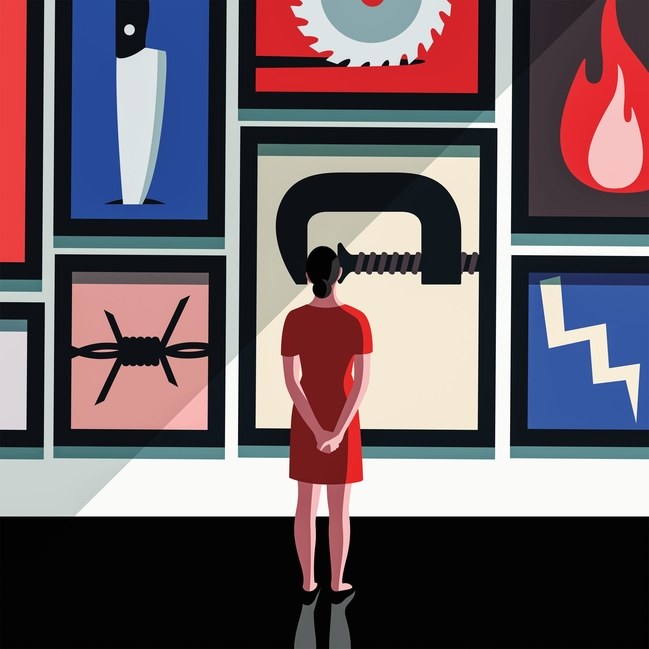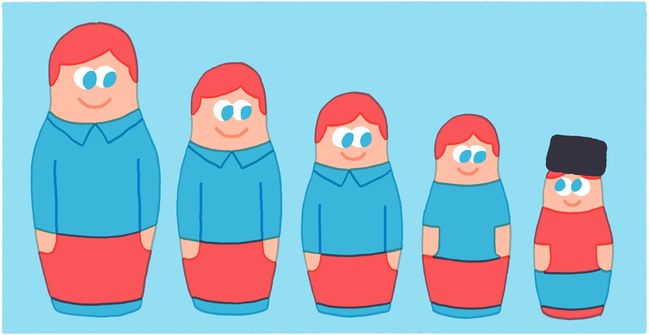
Nicola Twilley looks at current research into the neural patterns behind pain in the New Yorker:
On a foggy February morning in Oxford, England, I arrived at the John Radcliffe Hospital, a shiplike nineteen-seventies complex moored on a hill east of the city center, for the express purpose of being hurt. I had an appointment with a scientist named Irene Tracey, a brisk woman in her early fifties who directs Oxford University’s Nuffield Department of Clinical Neurosciences and has become known as the Queen of Pain. “We might have a problem with you being a ginger,” she warned when we met. Redheads typically perceive pain differently from those with other hair colors; many also flinch at the use of the G-word. “I’m sorry, a lovely auburn,” she quickly said, while a doctoral student used a ruler and a purple Sharpie to draw the outline of a one-inch square on my right shin.
Wearing thick rubber gloves, the student squeezed a dollop of pale-orange cream into the center of the square and delicately spread it to the edges, as if frosting a cake. The cream contained capsaicin, the chemical responsible for the burn of chili peppers. “We love capsaicin,” Tracey said. “It does two really nice things: it ramps up gradually to become quite intense, and it activates receptors in your skin that we know a lot about.” Thus anointed, I signed my disclaimer forms and was strapped into the scanning bed of a magnetic-resonance-imaging (MRI) machine.
The machine was a 7-Tesla MRI, of which there are fewer than a hundred in the world. The magnetic field it generates (teslas are a unit of magnetic strength) is more than four times as powerful as that of the average hospital MRI machine, resulting in images of much greater detail. As the cryogenic units responsible for cooling the machine’s superconducting magnet clicked on and off in a syncopated rhythm, the imaging technician warned me that, once he slid me inside, I might feel dizzy, see flashing lights, or experience a metallic taste in my mouth. “I always feel like I’m turning a corner,” Tracey said. She explained that the magnetic field would instantly pull the proton in each of the octillions of hydrogen atoms in my body into alignment. Then she vanished into a control room, where a bank of screens would allow her to watch my brain as it experienced pain.
During the next couple of hours, I had needles repeatedly stuck into my ankle and the fleshy part of my calf. A hot-water bottle applied to my capsaicin patch inflicted the perceptual equivalent of a third-degree burn, after which a cooling pack placed on the same spot brought tear-inducing relief. Each time Tracey and her team prepared to observe a new slice of my brain, the machine beeped, and a small screen in front of my face flashed the word “Ready” in white lettering on a black background. After each assault, I was asked to rate my pain on a scale of 0 to 10.
Initially, I was concerned that I was letting the team down. The capsaicin patch hardly tingled, and I scored the first round of pinpricks as a 3, more out of hope than conviction. I needn’t have worried. The patch began to itch, then burn. By the time the hot-water bottle was placed on it, about an hour in, I was surely at an 8. The next set of pinpricks felt as if I were being run through with a hot metal skewer.
“You’re a good responder,” Tracey told me, rubbing her hands together, when I emerged, dazed. “And you’ve got a lovely plump brain—all my postdocs want to sign you up.” As my data were sent off for analysis, she pressed a large cappuccino into my hands and gently removed the capsaicin with an alcohol wipe.
Tracey didn’t need to ask me how it had gone. The imaging-analysis software, designed in her department and now used around the world, employs a color scale that shades from cool to hot, with three-dimensional pixels coded from blue through red to yellow, depending on the level of neural activity in a region. Tracey has analyzed thousands of these “blob maps,” as she calls them—scans produced using a technique called functional magnetic resonance imaging (fMRI). Watching a succession of fiery-orange jellyfish flaring up in my skull, she had seen my pain wax and wane, its outlines shifting as mild discomfort became nearly unbearable agony.
For scientists, pain has long presented an intractable problem: it is a physiological process, just like breathing or digestion, and yet it is inherently, stubbornly subjective—only you feel your pain. It is also a notoriously hard experience to convey accurately to others. Virginia Woolf bemoaned the fact that “the merest schoolgirl, when she falls in love, has Shakespeare or Keats to speak her mind for her; but let a sufferer try to describe a pain in his head to a doctor and language at once runs dry.” Elaine Scarry, in the 1985 book “The Body in Pain,” wrote, “Physical pain does not simply resist language but actively destroys it.”
(…)




